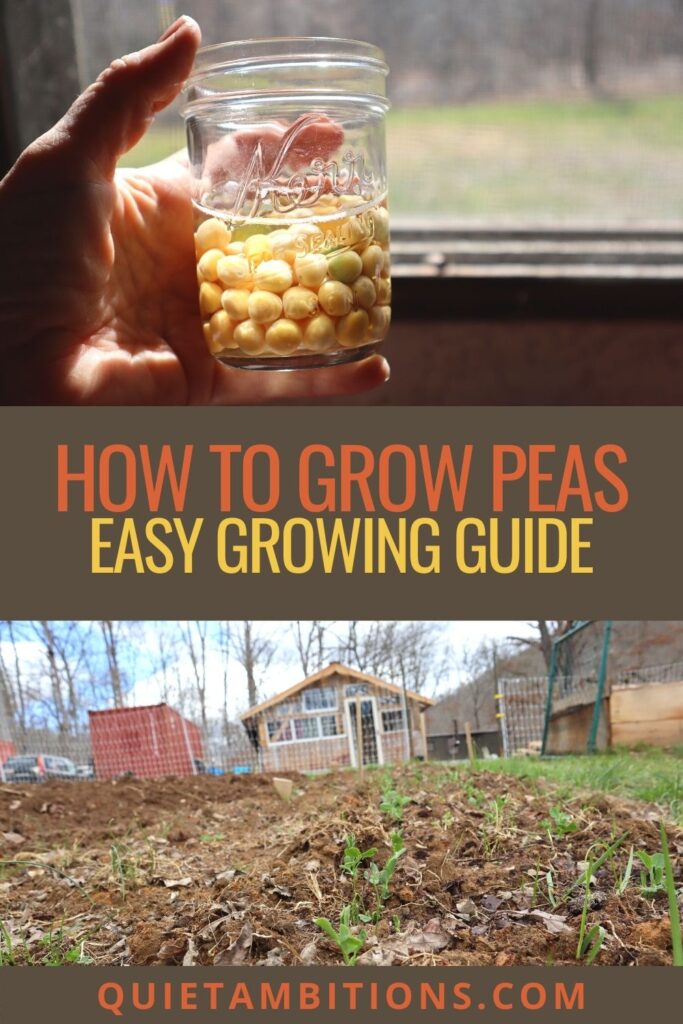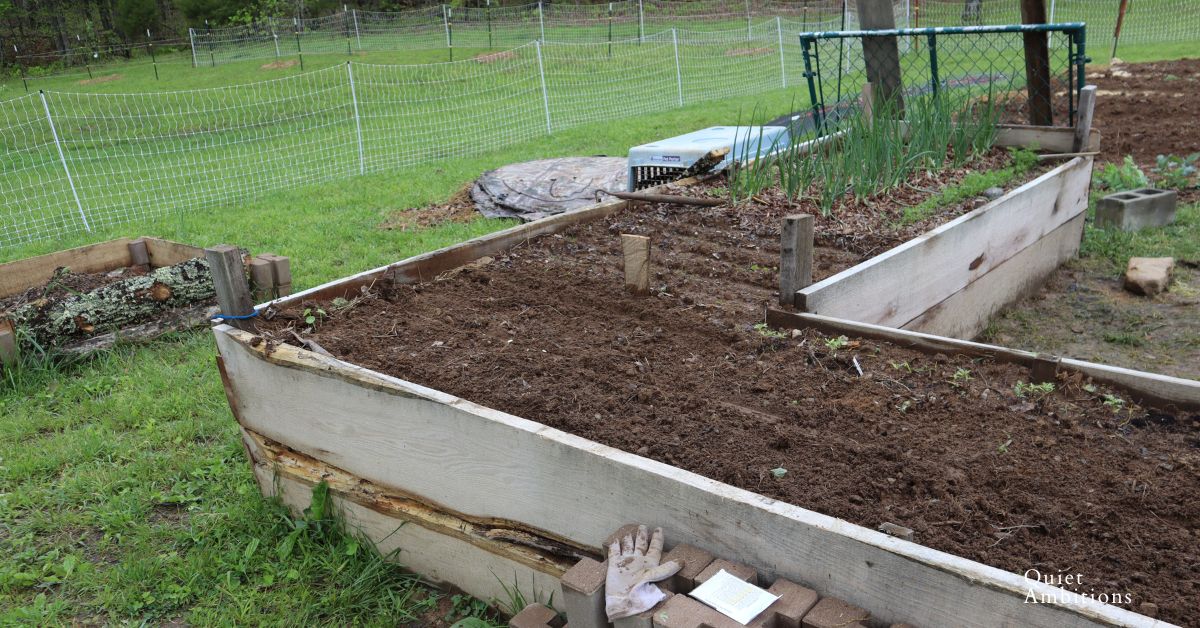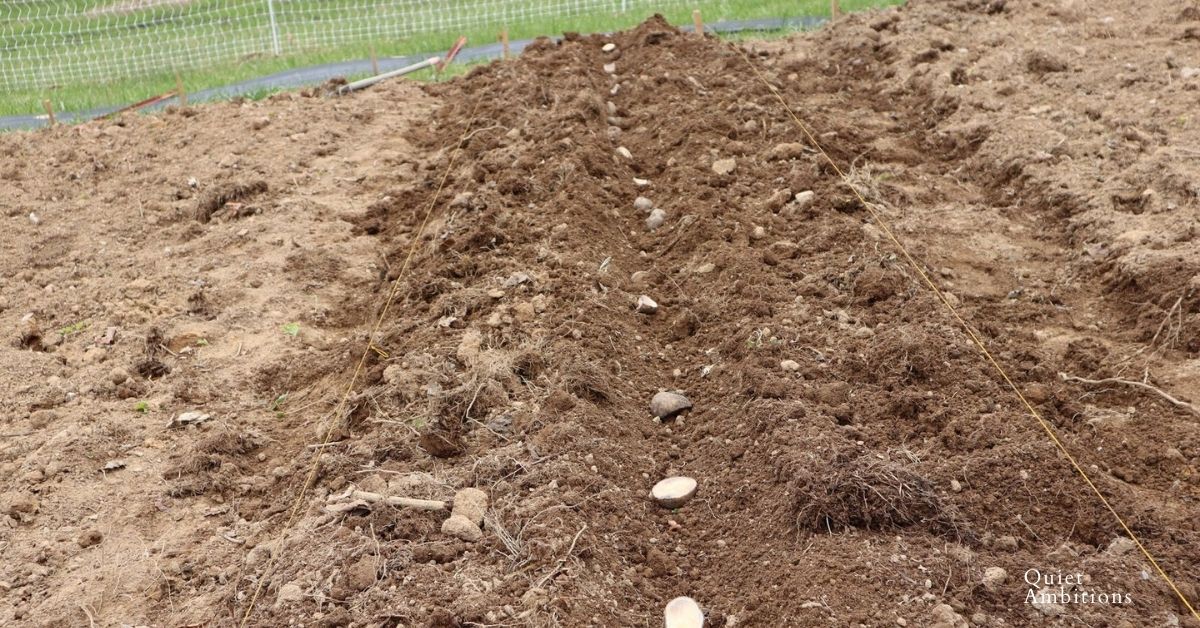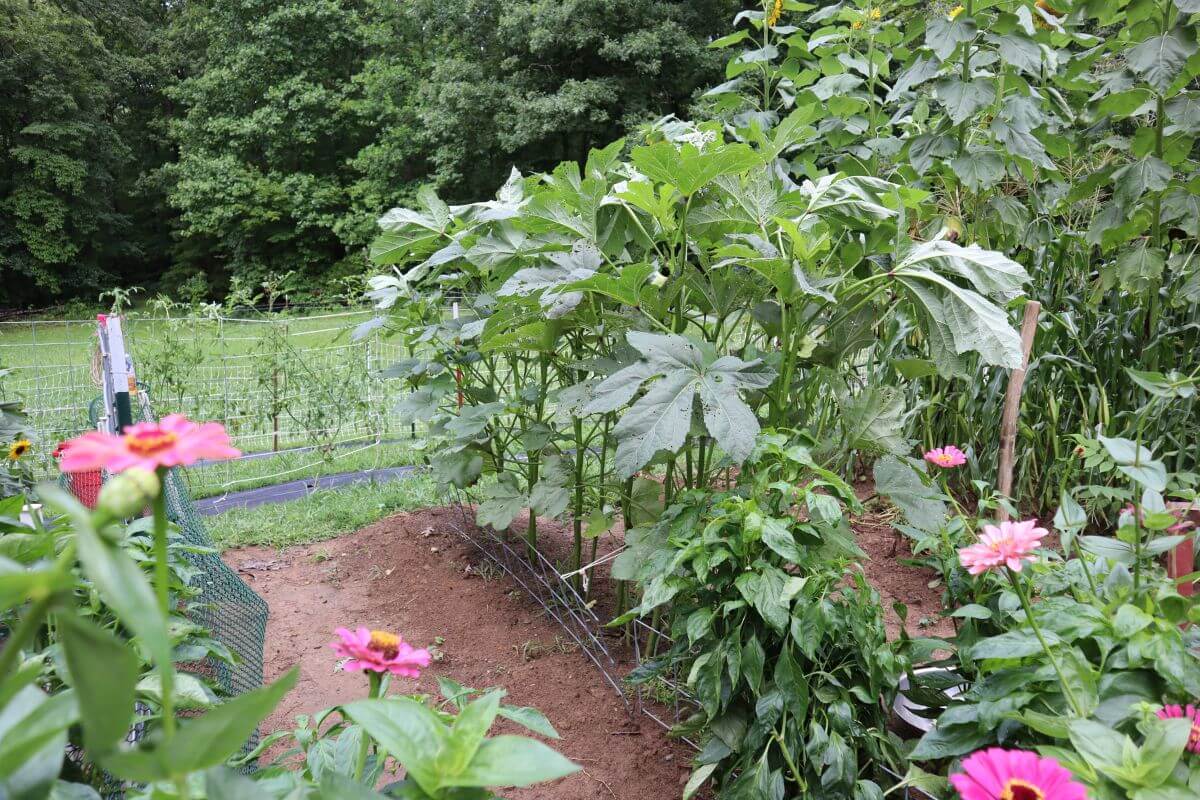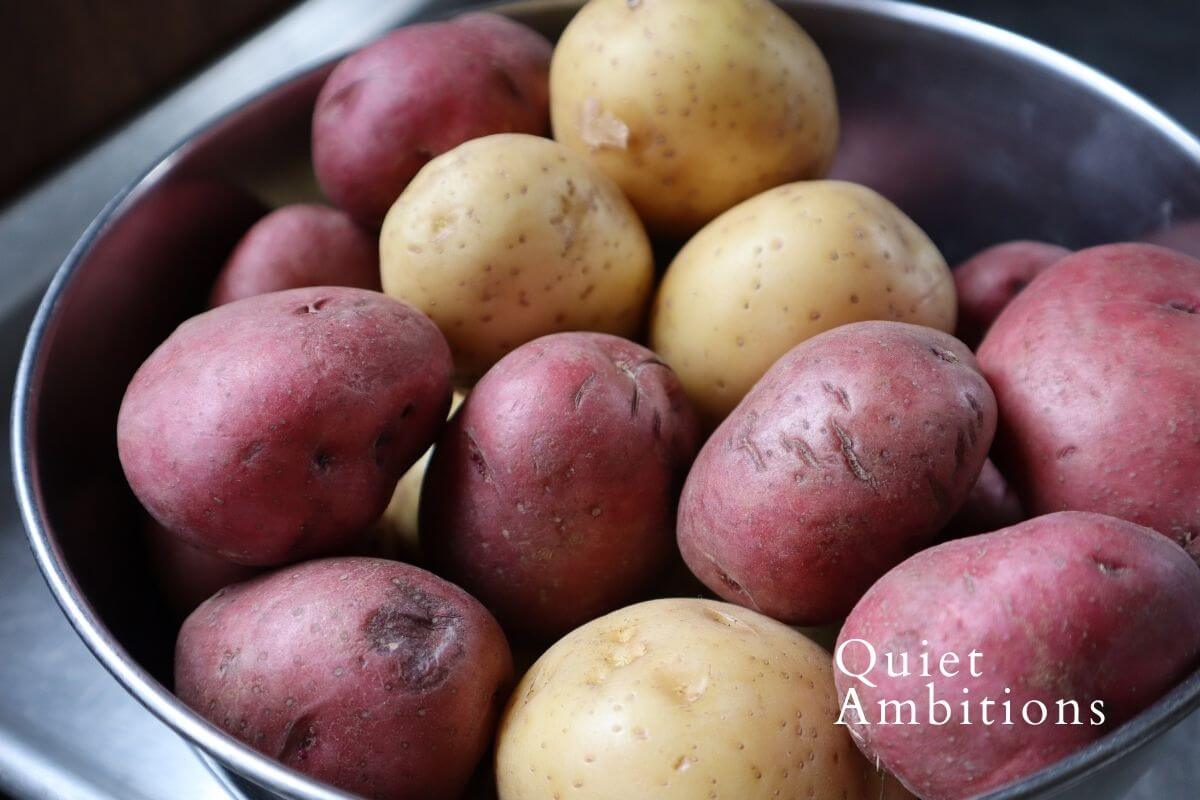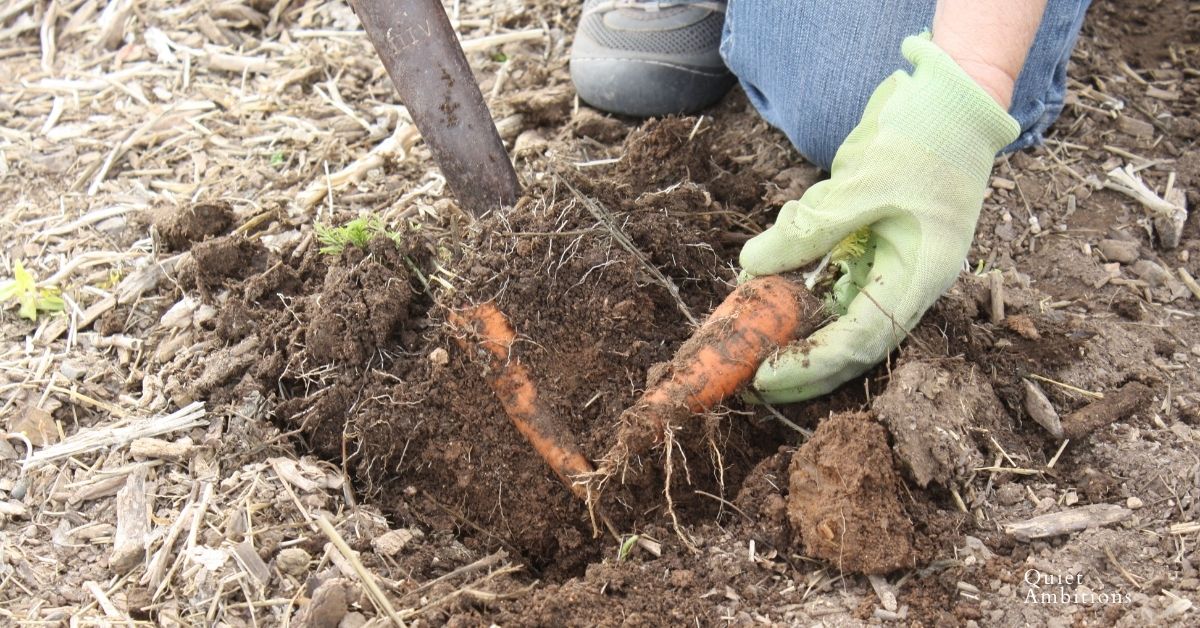How to Grow Peas: Easy Growing Guide
Some garden crops just make you happy! That includes peas, one of the first crops that can go into the ground in the spring. This makes peas one of my favorite things to grow!
When I lived in Colorado, the finicky spring always gave me some warm days early in the year that made me want to get out and start planting. Unfortunately, we also had late surprise snowstorms that would kill many less-hardy veggies, but peas and other early crops let me get out in the dirt anyway!
In this easy growing guide, you’ll learn how to grow peas in YOUR garden.
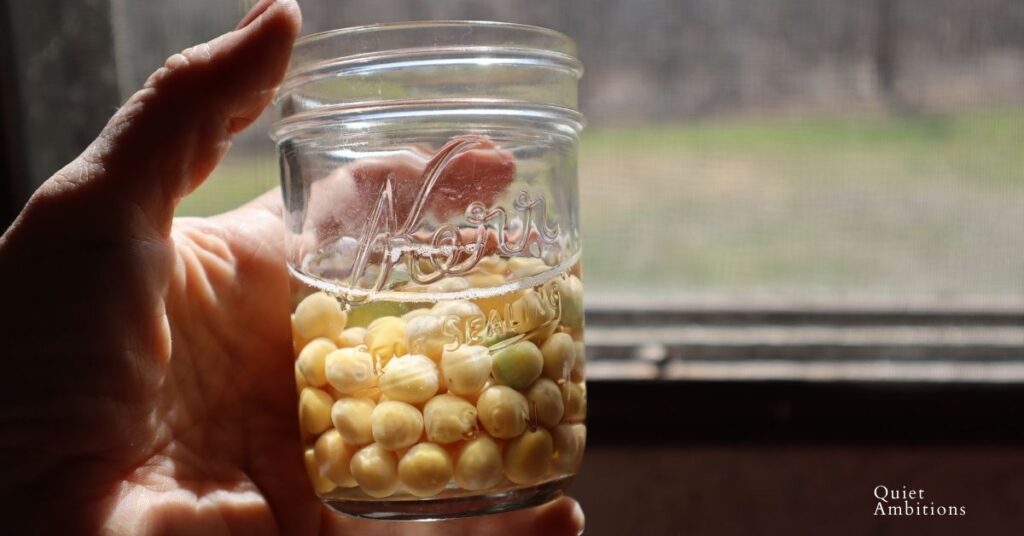
Different Types of Peas – What are Snow Peas vs. Snap Peas?
There are two types of peas that I plant in my garden: A bush pea, which needs no trellis, and a climbing pea which needs to be able to grow up with support.
I have not noticed a big difference in output, so it really is a personal preference which one you choose to grow.
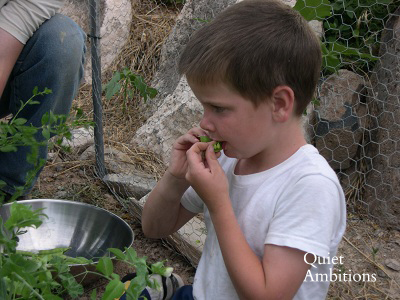
Growing Peas Quick Tips
Suggested Soil Temp: 40 to 60 degrees F
When to Sow Indoors: NA
When to Sow Outdoors: ~
4 to 6 weeks before Last Spring Frost
6 to 8 weeks before First Fall Frost.
When to Grow Peas: Spring, Fall
Seed Depth: 1” to 2”
Days to Germination: 7 to 28 Days
Spacing: 1” to 3”
Light Requirements: Full Sun
Watering Requirements: Light to Moderate
Good Companions: Chives, Mint, Carrots, Corn, Cucumbers, Spinach, Radish, Turnip, Beans, Eggplant, Parsley, Strawberries, Sweet Peppers
Bad Companions: Onion, Garlic
Planting Peas
As I mentioned earlier, peas are one of the earliest crops to be planted in the garden. As soon as your soil can be worked you can get the peas in the ground. When you hear the term ‘as soon as the soil can be worked’ that simply means when it is thawed and can be turned with a hoe or shovel. So that’s pretty early.
Remember peas are cold hardy so they will withstand a frost or even light snow. I’ve never checked my soil temperature but if you are unsure it is a great way to know if it is time. 60 degrees F soil temp makes for quick sprouting of peas.
I recently did a video in my garden the morning I was planting peas.
How to Plant Peas
Soaking your peas in plain water for a day will speed up the germination process as well. I just put mine in a glass jar add some water to cover. The next day, drain the water off and you can plant as usual. The picture below shows how the peas will swell and be hydrated before planting. This just gives them a headstart.
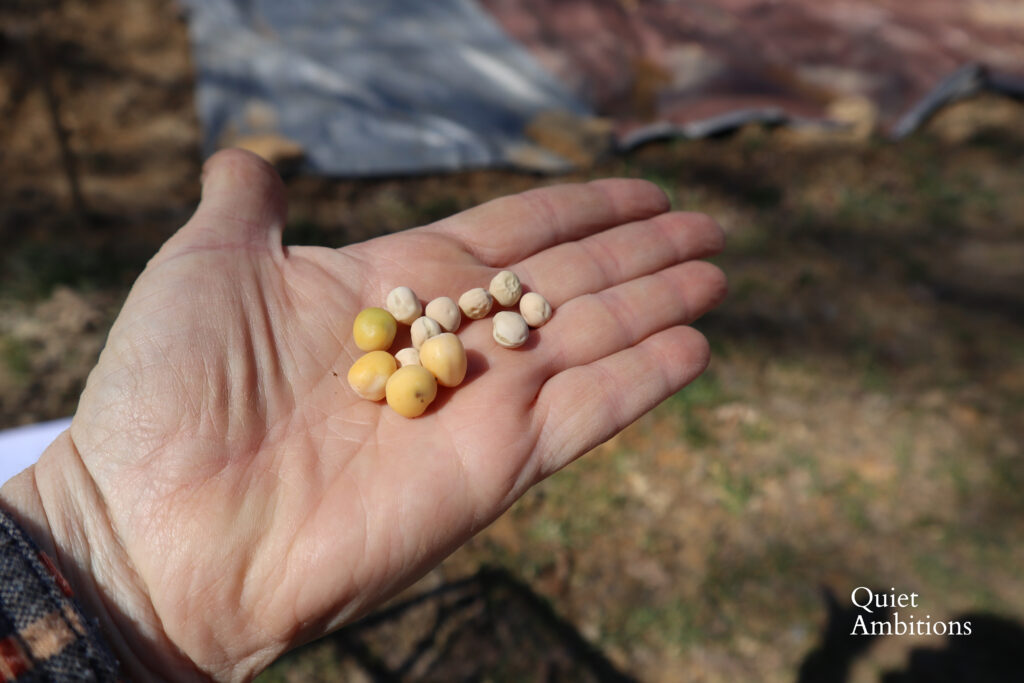
Choose a well-draining plot in full sun. Make shallow furrows and then sow pea seeds 1” deep in the dirt, 2” apart. I prefer to make double rows close together with a path between the double rows.
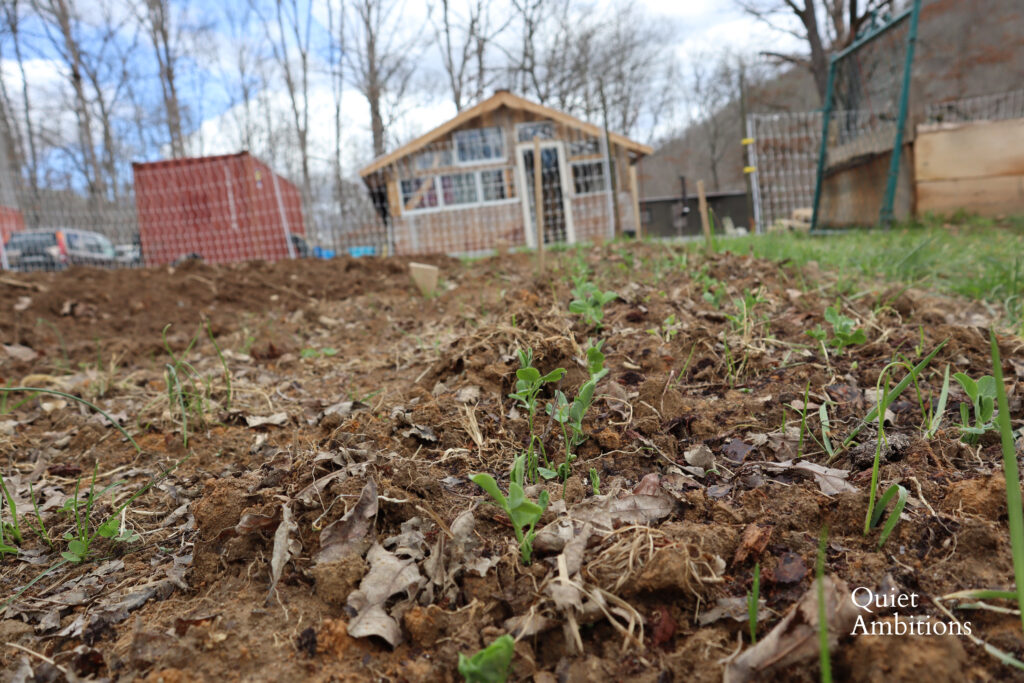
Companion Planting Peas
Peas are a great nitrogen fixer so they can be grown and will benefit many garden crops. Carrots, corn (tall plants can be used as natural trellises), cucumbers, spinach, radishes, turnips, and beans.
Since peas are such an early crop they can often be grown and interplanted with later crops. By the time peas are done, peppers and tomatoes can take that space. The peas leave behind a nitrogen fix for the later crop.
Chives will benefit peas as they will deter aphids. And apparently mint improves the flavor of peas. Watch that mint though! It will spread and can take over. If you want to plant it close I’d suggest a container.
Don’t plant peas next to garlic or onion plants, however as they will stunt the growth and these plants don’t get along well.
Growing Peas
Once germinated, peas require minimal attention in the garden to actually grow.
If the weather is particularly dry, you will need to water your pea plants, but they don’t need TOO much water! Keep the ground moist. Pay attention especially when the peas are ripening and putting on the seed pods. They will need more moisture during that stage.
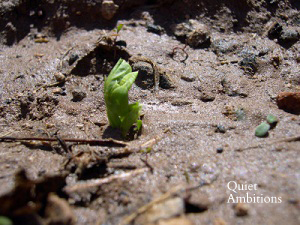
Pull weeds as needed. Remember the shallow growth of the root system. Weeds will compete.
Mulching peas as with most garden vegetables is a good idea. The mulch will inhibit the weeds and keep the ground moist. Mulch can be compost, straw, hay, woodchips, or leaves among other things.
My yearly routine: When I start mowing the lawn I will collect clippings and add them as mulch in my garden. I start at one end of the row simply add the clippings around my emerging plants. As the spring progresses more and more of the rows are mulched.
If pea plants turn yellow it indicates a problem. They may be too hot, in which case a bit of shade would help. Try a shade cloth. Or it could be they are simply too dry. Check the soil moisture.
Watering and Fertilizing Peas
Peas are a plant that doesn’t need a lot of fussing when it comes to fertilizer. A good compost topping is always helpful for almost any vegetable. A dose of an all-purpose fertilizer might be helpful after they have sprouted and are a few inches tall. But you don’t want to over-fertilize. Phosphorus and potassium are fine… don’t overdo the nitrogen. Nitrogen promotes green growth. You’ll end up with lots of vine and leaves and not many seed pods.
Peas have a shallow root system so they do need to be kept moist. When you water don’t use a hard spray or you may disrupt those shallow roots. Just a light hose, sprinkle. If you live in a dry climate I’d recommend looking at soaker hoses or driplines to maintain moist soil.
Peas much prefer full sun, though they can tolerate some shade if that’s all you have available.
How to Trellis Peas
Some peas are a bush variety and don’t need a trellis. But some are naturally vining plants, so you need to plant them with some kind of trellis or vertical growing panel for the plants to climb. (Plus, this makes harvesting easier too.)
Stiff fencing makes a great trellis. Simply plant staggered along both sides and you can harvest from both sides.
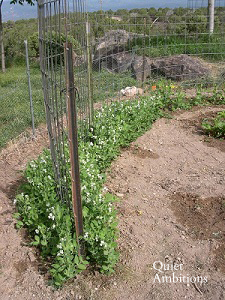
How Long Will It Take to Grow Peas
Peas will take 60 to 70 days until they start producing mature peas, then you can pick multiple harvests. Grow the first crop in early spring. Harvest and then wait until the heat of summer passes. About 6-8 weeks before your first expected fall frost you can plant again. The peas will grow through the cool fall temperatures and give you a second crop.
Harvesting Peas
When it comes to peas, the rule of thumb is to pick early and often. The more you harvest, the more the plants will produce! In the morning, gently pull the sweet pods from the vines.
Harvesting Snap Peas
To harvest snap peas, you’re looking for fat, shiny pods. The seeds inside the pods should be fully formed but not overbig. If you wait too long they get this starchy feel to them. Still edible! But oh those just right peas are so much better.
Just be warned. You know how you purchase peas from the grocery store and they are almost exactly the same size? Your homegrown peas will likely not be as identical. All of them are edible. From the bit underripe and tiny to the bigger and possibly overripe starchy ones.
I keep the tiny ones but I’ll admit I’m a little picky on the overripe stage. You’ll have to taste test and see. If they are too overripe toss them out to the chickens or… if you have ducks put them in a pool of water. They’ll go crazy fishing them out.
Harvesting Snow Peas
To harvest snow peas, you’re looking for young green pods. The key to growing snow peas is harvesting early! Harvest these when the seeds are tiny in the pod. If you wait, the pods will get tough and stringy. Ask me how I know! It is one reason I prefer the snap peas taken out of the pod.
Important – Don’t leave anything ripe on the vine.
If you notice overripe pods that you have missed in previous pickings, even if they are overripe, go ahead and pull them. If you leave them, the plant will think it is done and slow down production.
The exception to this is at the end of the season I like to leave some pods to ripen and dry right on the vine. When the pods rattle, the seeds are done and ready to be pulled and stored for planting next year. Store in a paper bag or envelope. This keeps them from molding in case there is any moisture left. Be sure to mark the type of peas and date on the package.
Insects & Diseases
Peas are susceptible to a few insects like aphids and Mexican bean beetles, but fungal diseases are typically a bigger threat than actual pests. To control fungus, keep things sanitary in the garden, remove diseased plants in a timely manner, water plants properly, and provide proper ventilation when plants do get wet.
How to Store
Once peas are harvested, they will only store for less than a week in the fridge. For longer term storage, you can freeze them: https://www.simplycanning.com/how-to-freeze-peas
We don’t care much for canned peas. But canning is an option as well.
Growing Peas FAQ
Black-eyed peas aren’t quite the same as regular peas. They are more like a dry shell bean, being in the legume family as well.
Peas are legumes. Other legumes include bush beans, pole beans, lima beans, soybeans, and even peanuts!
Yes, as long as you provide a trellis or some other kind of vertical support for vining peas so they can grow upwards as desired. And as with all container gardens, make sure to keep the soil moist, because pots tend to dry out more quickly.
Pin this to find later!
